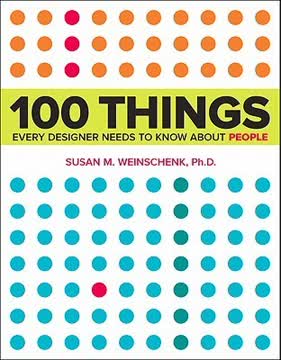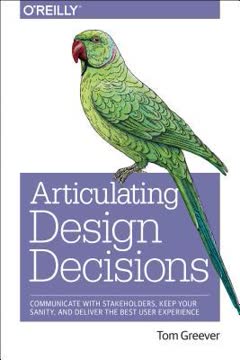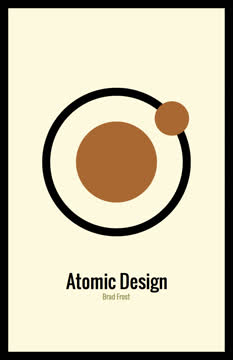Key Takeaways
1. Mobile content strategy is about adapting content for all platforms, not just mobile
"Get your content ready to go anywhere because it's going to go everywhere."
Content is device-agnostic. Mobile content strategy isn't about creating content specifically for mobile devices. It's about developing a holistic approach to make your content adaptable for any platform - smartphones, tablets, desktops, and even emerging technologies like smart TVs or in-car systems. The goal is to create content that can be flexibly published and maintained across all these channels.
Future-proof your content. By focusing on making your content adaptable, you're preparing for future platforms that don't even exist yet. This approach saves time and resources in the long run, as you won't need to create separate content for each new device or platform that emerges. It also ensures a consistent user experience across all touchpoints.
Break free from the "mobile context" myth. Many organizations mistakenly believe that mobile users only want quick, task-based information. In reality, mobile usage varies widely - from in-depth reading to complex tasks. Your content strategy should accommodate all these use cases, not just a narrow definition of "mobile."
2. Deliver content parity across devices, not a stripped-down mobile version
"If it shouldn't be on the mobile site, it shouldn't be on the desktop site either!"
Content parity is key. Users expect to access the same content and functionality regardless of the device they're using. Offering a limited "mobile version" of your site frustrates users and can lead to a fragmented brand experience. Instead, aim to provide equivalent content across all platforms, adapting the presentation as needed for different screen sizes and capabilities.
Mobile-only users are growing. A significant and increasing number of users access the internet primarily or exclusively through mobile devices. By limiting content on mobile, you're potentially alienating a large portion of your audience. This is especially true for certain demographics, including younger users and those in developing countries.
Rethink, don't just reduce. Instead of asking "What can we cut for mobile?", use mobile as an opportunity to reassess all your content. If something isn't valuable enough for mobile, it's probably not valuable for desktop either. This process can lead to better, more focused content across all platforms.
3. Create adaptive content that's flexible, structured, and reusable
"The more structure you put into content the freer it will become."
Structured content is the foundation. To create truly adaptive content, break it down into meaningful, reusable chunks. This means moving away from thinking in terms of "pages" and instead focusing on content components that can be mixed and matched as needed. Use a content model to define these structures.
Make content presentation-independent. Separate the content from its visual presentation. This allows the same content to be styled differently for various platforms without needing to recreate it. Avoid embedding formatting within the content itself.
Leverage metadata. Add meaningful metadata to your content to make it more flexible and discoverable. This could include:
- Content type (e.g., article, product description)
- Topic categories
- Target audience
- Priority level
- Expiration date
4. Use mobile as a catalyst to improve all your content
"There is no 'how to write for mobile.' There's only good writing. Period."
Mobile constraints breed clarity. The limited screen space on mobile devices forces you to prioritize and simplify your content. This discipline leads to clearer, more focused writing that benefits users on all platforms. Use mobile as a lens to evaluate and improve your existing content.
Conduct a mobile-focused content audit. Review your content with mobile in mind:
- Is it concise and scannable?
- Does it get to the point quickly?
- Is it broken into logical chunks?
- Is there unnecessary jargon or fluff?
Edit ruthlessly. Use the mobile audit as an opportunity to:
- Tighten up wordy passages
- Eliminate outdated or redundant content
- Simplify complex language
- Restructure content for better scannability
5. Develop a system of headlines, summaries, and body text for multi-platform use
"Don't create content for a specific context."
Create a flexible headline system. Instead of writing separate headlines for each platform, develop a system of headlines that can be used across contexts:
- Short version (60-100 characters) for mobile and social media
- Long version (100-200 characters) for more spacious layouts
- SEO-optimized version for search engines
Write multiple summaries. Craft different length summaries for various uses:
- Short teaser (1-2 sentences) for navigation and search results
- Medium summary (50-100 words) for landing pages and previews
- Long summary (100-200 words) for more detailed overviews
Structure body content for flexibility. Break long content into logical sections with clear subheadings. This allows for easier adaptation to different screen sizes and reading contexts. Consider using:
- Anchor links for easy navigation within long pages
- Progressive disclosure techniques (e.g., expandable sections)
- Clear hierarchy of information importance
6. Rethink information architecture and navigation for smaller screens
"Progressive disclosure is about offering a good teaser."
Prioritize wayfinding. On mobile, users need strong cues to orient themselves and find what they're looking for. Focus on:
- Clear, descriptive navigation labels
- Short, informative teasers for content
- Bread crumbs or other location indicators
Rethink navigation patterns. Traditional desktop navigation often doesn't translate well to mobile. Consider:
- Collapsible menus
- Tab bars for top-level navigation
- Search-first navigation for content-heavy sites
Adapt content presentation. Some content types need special consideration for mobile:
- Tables: Consider vertical layouts or progressive disclosure of columns
- Images: Develop a system of image crops for different screen sizes
- Forms: Break long forms into steps or use smart defaults
7. Align people, processes, and technology to support multi-channel publishing
"Your content isn't going to take care of itself."
Leadership is crucial. Successful mobile content strategy requires buy-in and coordination across departments. Establish clear leadership to:
- Evangelize the importance of mobile
- Break down silos between mobile and desktop teams
- Allocate resources for multi-channel publishing initiatives
Redefine roles and responsibilities. Consider new or expanded roles such as:
- Mobile editor to oversee content across platforms
- Taxonomy manager to maintain consistent metadata
- Content package creator to develop flexible, reusable content
Adapt workflows and approval processes. Multi-channel publishing requires rethinking how content is created, reviewed, and published:
- Move legal review upstream to the content management system
- Develop ways to preview and QA content on multiple devices
- Implement analytics that track content performance across platforms
Choose the right technology. Your content management system should support:
- Structured content creation
- Flexible content models
- Multi-channel publishing workflows
- Robust metadata and taxonomy management
Last updated:
FAQ
1. What is "Content Strategy for Mobile" by Karen McGrane about?
- Holistic content strategy: The book explains how to develop a content strategy that works across all platforms—mobile, tablet, desktop, and beyond—rather than focusing solely on mobile devices.
- Adaptive content focus: It introduces the concept of adaptive content, which is structured, reusable, and presentation-independent, allowing content to be published anywhere.
- Practical guidance: The book provides actionable steps for auditing, editing, structuring, and managing content to ensure it is accessible and effective on any device.
- Organizational change: It emphasizes the need for changes in workflow, tools, and organizational structure to support multi-channel publishing.
2. Why should I read "Content Strategy for Mobile" by Karen McGrane?
- Mobile is unavoidable: The book demonstrates that users increasingly access content on mobile devices, making it essential for organizations to adapt.
- Avoid common pitfalls: It helps readers understand why simply creating a "lite" mobile site or forking content is unsustainable and inefficient.
- Future-proof your content: The advice prepares organizations for new platforms and devices by focusing on content flexibility and reuse.
- Improve user experience: By following the book’s strategies, you can deliver a better, more consistent experience to users regardless of how they access your content.
3. What are the key takeaways from "Content Strategy for Mobile" by Karen McGrane?
- Content parity is crucial: Aim for content parity across platforms—users should never be forced to visit the desktop site for information.
- Adaptive content is the future: Structure content for reuse, with meaningful metadata and presentation independence, to support multi-channel publishing.
- Process and tools matter: Success requires changes in content management systems, editorial workflows, and organizational roles.
- Start with strategy: Even small steps, like analytics and content audits, can move your organization toward a robust mobile content strategy.
4. How does Karen McGrane define "adaptive content" in "Content Strategy for Mobile"?
- Reusable content: Content is created with the intention of being reused across multiple platforms and contexts.
- Structured content: Information is broken into meaningful chunks, not blobs, making it easier to combine and display in different ways.
- Presentation-independent: Content is separated from its visual styling, allowing each platform to present it optimally.
- Metadata-driven: Rich metadata enables platforms to query and display the most appropriate content elements for each context.
- Supportive CMS: The content management system should encourage and facilitate the creation and management of adaptive content packages.
5. What are the main problems with creating separate mobile websites, according to "Content Strategy for Mobile"?
- Content forking: Maintaining separate sites leads to duplicate content, inconsistent updates, and increased workload.
- Unsustainable maintenance: Every change must be made in multiple places, which is inefficient and error-prone.
- User experience issues: Users may encounter missing or outdated information on one version of the site.
- CMS limitations: Most content management systems are not designed to easily support multiple versions of content for different platforms.
6. How does "Content Strategy for Mobile" by Karen McGrane recommend structuring content for multi-channel publishing?
- Content modeling: Define content types, attributes, data limits, and relationships to break content into manageable chunks.
- Packages, not pages: Create content packages with multiple versions (e.g., headlines, summaries, images) for different uses.
- System of headlines and summaries: Write multiple headline and summary versions to fit various contexts and platforms.
- Alternative formats: Prepare alternative content (e.g., text for audio/video, different image crops) to ensure accessibility across devices.
7. What is the role of metadata in "Content Strategy for Mobile" by Karen McGrane?
- Enables flexibility: Metadata allows content to be filtered, sorted, and displayed appropriately on different platforms.
- Supports reuse: Well-defined metadata makes it easier to repurpose content without manual intervention.
- Encodes meaning: Metadata communicates the purpose, priority, and relationships of content elements beyond visual styling.
- Facilitates automation: Metadata-driven systems can automate content delivery and presentation, reducing manual workload.
8. How does "Content Strategy for Mobile" suggest organizations should change their internal processes and teams?
- Leadership alignment: Leaders must evangelize mobile, allocate resources, and break down silos between teams.
- Clear roles and responsibilities: Define who creates, edits, manages, and maintains content packages, metadata, and media assets.
- Editorial workflow updates: Adapt workflows to support multi-channel publishing, including legal review and quality assurance for all platforms.
- Continuous measurement: Implement analytics and user research processes to inform ongoing content strategy decisions.
9. What practical steps does "Content Strategy for Mobile" recommend for getting started with mobile content strategy?
- Analyze analytics: Review data on mobile usage, search queries, and user behavior to identify gaps and opportunities.
- Conduct content inventory and audit: Systematically document and assess all content, focusing on what needs to be revised, deleted, or created for mobile.
- Prototype and test: Use user research and usability testing to validate content decisions and improve the mobile experience.
- Competitive review: Study competitors’ mobile sites and apps to learn best practices and avoid common mistakes.
10. How does "Content Strategy for Mobile" by Karen McGrane address writing and editing for mobile?
- Good writing is universal: There’s no special way to write for mobile—clarity, conciseness, and relevance matter on all platforms.
- Mobile as a lens: Use mobile’s constraints to prioritize and tighten content, removing jargon and unnecessary information.
- Structure for scanning: Use headings, summaries, bullet points, and clear calls to action to facilitate quick reading and navigation.
- Edit ruthlessly: Ensure every word earns its place, and that the main message is immediately clear to the reader.
11. What are some of the most important quotes from "Content Strategy for Mobile" by Karen McGrane, and what do they mean?
- “Get your content ready to go anywhere because it’s going to go everywhere.” (Brad Frost) — Emphasizes the need for content flexibility and future-proofing.
- “The more structure you put into content the freer it will become.” (Rachel Lovinger) — Highlights the paradox that structured content is more adaptable and reusable.
- “Metadata is a love note to the future.” (Jason Scott) — Stresses the long-term value of investing in rich metadata for content.
- “If it shouldn’t be on the mobile site, it shouldn’t be on the desktop site either!” — Encourages organizations to use mobile as a catalyst for improving all content, not just mobile content.
12. What real-world examples and case studies does "Content Strategy for Mobile" by Karen McGrane provide?
- NPR’s COPE model: NPR’s “Create Once, Publish Everywhere” approach demonstrates how structured content and metadata enable multi-platform publishing.
- American Cancer Society: ACS prioritized content parity and mobile accessibility to reach underserved audiences, doubling mobile visits and improving outcomes.
- Retailers and publishers: Examples like Gap, American Eagle, and Condé Nast illustrate the pitfalls of content forking and the benefits of unified workflows.
- Industry-specific insights: The book covers challenges and solutions for advertisers, retailers, publishers, financial services, healthcare, universities, and restaurants, showing the universal need for adaptive content strategy.
Review Summary
Content Strategy for Mobile receives mostly positive reviews, with readers praising its practical advice on creating adaptive content for multiple platforms. Many appreciate McGrane's arguments for separating content from presentation and structuring it with metadata. The book is seen as valuable for content strategists and web professionals, offering insights on improving overall content quality. Some readers find the content repetitive or outdated, but most consider it a useful guide for organizations transitioning to mobile-friendly content strategies. The book's emphasis on making all content available across devices resonates with many readers.
A Book Apart Series Series
Similar Books








Download PDF
Download EPUB
.epub digital book format is ideal for reading ebooks on phones, tablets, and e-readers.







